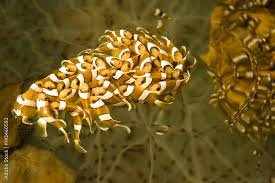Chinese fresh tea has played a pivotal role in shaping global tea culture for centuries. As the birthplace of tea, China has introduced the world to a diverse range of teas, intricate tea ceremonies, and profound philosophies surrounding tea drinking. The impact of Chinese fresh tea extends beyond its national borders, influencing tea traditions in countries such as Japan, Korea, Britain, India, and beyond.

This article explores the history, influence, and contributions of Chinese fresh tea to the development of international tea culture, examining how it has shaped global tea-drinking customs, trade, and appreciation.
The Origin of Tea and China’s Role in Global Tea Culture
Tea originated in China over 5,000 years ago, with historical records dating back to the Shen Nong era. According to legend, the Chinese emperor Shen Nong discovered tea when leaves from a wild tea tree fell into his boiling water, creating a refreshing and invigorating beverage. Over centuries, tea became an essential part of Chinese culture, deeply embedded in medicine, philosophy, and daily life.
China’s influence on global tea culture can be attributed to:
- The Silk Road and Maritime Trade Routes, which spread tea to other nations.
- Chinese Monks and Scholars, who introduced tea culture to neighboring countries.
- The Development of Tea Processing Techniques, which became the foundation for tea production worldwide.
How Chinese Tea Influenced International Tea Cultures
1. The Spread of Tea to Japan and the Birth of the Japanese Tea Ceremony
Chinese tea culture significantly influenced Japan’s tea traditions. During the Tang Dynasty (618–907 AD), Buddhist monks from Japan traveled to China and brought back tea seeds, brewing techniques, and philosophical teachings.
- The famous Japanese Chanoyu (Tea Ceremony), influenced by Chinese Zen Buddhism, emphasizes mindfulness, simplicity, and harmony.
- The Matcha (powdered green tea) tradition originated from Chinese Song Dynasty (960–1279 AD) tea practices and later became a hallmark of Japanese tea culture.
2. The Influence of Chinese Tea on Korean Tea Culture
Korea also adopted tea-drinking customs from China, particularly during the Tang and Song Dynasties.
- Korean Darye (Tea Ceremony), which promotes tranquility and respect, was inspired by Chinese Confucian and Zen principles.
- Traditional Korean green tea production techniques were adapted from Chinese tea processing methods.
- Korea’s medicinal tea culture, incorporating herbs, flowers, and roots, was influenced by Chinese tea-medicine integration.
3. The Role of Chinese Tea in the British Tea Tradition
China played a direct role in shaping British tea culture. During the 17th century, the British East India Company began importing Chinese green and black teas, which soon became popular among the British aristocracy.
- Afternoon Tea Culture – Inspired by China’s traditional tea-drinking customs, British nobility established afternoon tea as a social event, pairing Chinese teas with pastries and snacks.
- The Rise of Black Tea in Britain – Chinese Keemun and Lapsang Souchong black teas influenced the British preference for strong, full-bodied teas.
- The Development of English Breakfast Tea – The foundation of English breakfast tea blends came from Chinese black tea varieties, later adapted with Indian and Sri Lankan teas.
4. The Introduction of Tea to India and the Global Tea Industry
Before British colonization, India had no established tea culture. The British, seeking an alternative to Chinese tea, began cultivating Assam and Darjeeling teas. However, Chinese tea techniques played a significant role in the development of India’s tea industry:
- Chinese tea-growing expertise and processing techniques were introduced to Indian tea plantations.
- Traditional Chinese rolling, oxidation, and drying methods were adapted to produce Assam, Darjeeling, and Nilgiri teas.
- India’s Masala Chai culture, which includes spiced tea blends, was inspired by China’s herbal tea traditions.
5. Chinese Tea’s Influence on Middle Eastern and Russian Tea Culture
Middle Eastern Tea Culture
- Chinese gunpowder green tea became the base for Moroccan Mint Tea, a staple in North African and Arab tea culture.
- Persian and Turkish samovars (tea brewing devices) were inspired by Chinese metal tea kettles used for traditional brewing.
Russian Tea Culture
- The Camel Caravan Trade brought Chinese black tea to Russia, leading to the popularity of Russian Caravan Tea.
- The Samovar brewing method, a signature of Russian tea culture, evolved from Chinese tea brewing customs.
Modern International Tea Trends Inspired by Chinese Fresh Tea
1. The Global Popularity of Green Tea and Health Teas
- Chinese Longjing (Dragon Well) and Mao Feng green teas are widely consumed for their antioxidant benefits.
- The concept of functional teas, such as detox and slimming teas, originates from Chinese medicinal tea practices.
2. The Rise of Bubble Tea and Modern Tea Innovations
- Bubble tea (Boba), originating in Taiwan, is influenced by Chinese milk tea traditions.
- China’s fruit-infused and herbal teas have inspired modern tea cocktails and tea-based beverages worldwide.
3. The Influence of Chinese Tea on the Specialty Tea Market
- Premium Chinese teas like Pu-erh, Tieguanyin, and White Peony are gaining popularity in Western gourmet tea markets.
- Organic and handcrafted tea production methods, pioneered by China, are now standard in the global specialty tea industry.
Conclusion
Chinese fresh tea has profoundly shaped international tea culture, influencing traditions in Japan, Korea, Britain, India, Russia, and the Middle East. The philosophy, brewing methods, and tea-processing techniques developed in China have inspired global tea-drinking customs, creating a shared appreciation for tea across cultures.
From the Japanese tea ceremony to British afternoon tea, Indian chai, and Russian samovars, China’s contributions to global tea culture are undeniable. Today, the expansion of specialty teas, health-focused brews, and innovative tea-based drinks continues to be inspired by Chinese fresh tea, solidifying its central role in international tea traditions.










